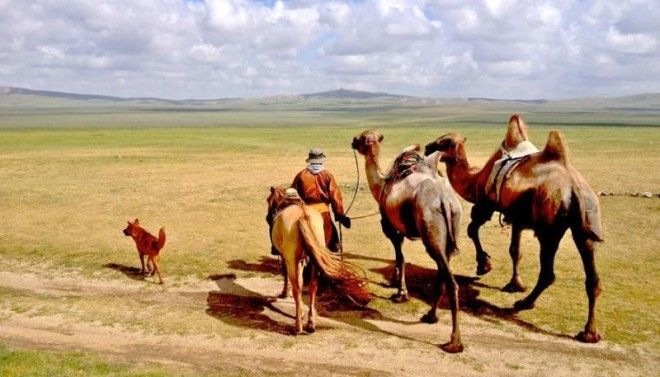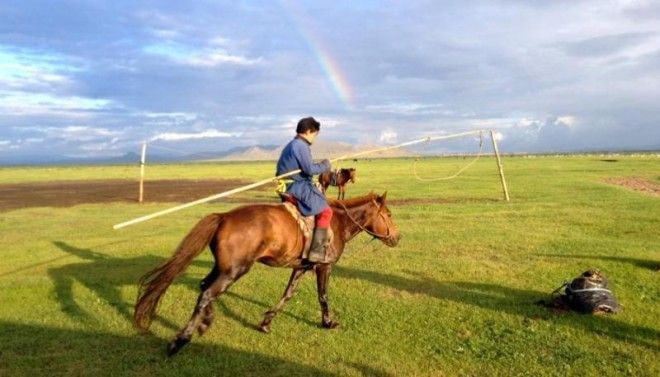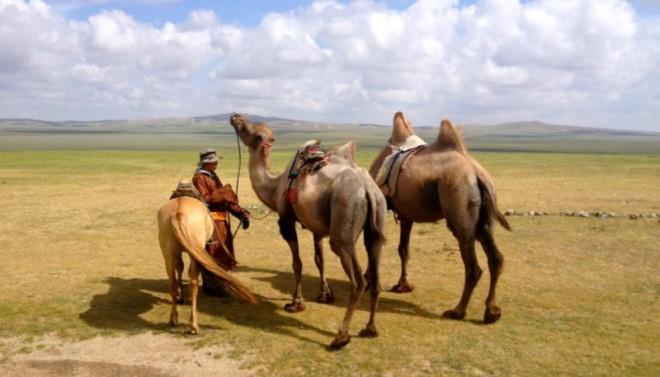Mongolian family life centers around the ger. These large, portable tents made of felt, plastic tarps, and ornate wooden slats protect nomadic families from some of the coldest temperatures on the planet. They are about ten meters in diameter, and each contains a small kitchen (consisting of a sink and maybe an electric burner), beds along the sides, a shrine to ancestors or holy figures, and a fireplace in the center. Smoke produced by the fire escapes through a hole in the center of the roof. When it rains, the water splashes inside until the family pulls a tarp across the ger for protection.
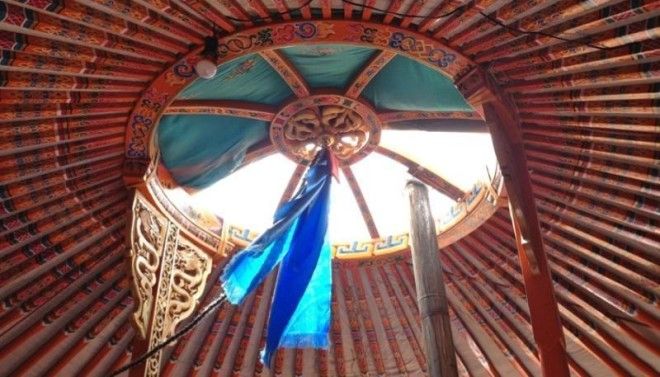
A blue Buddhist prayer flag hangs from the center of a ger on the steppes of Mongolia.
Mongolians are master horse riders. Many families own large herds of horses that roam the fenceless steppe, and fermented mare’s milk, which the Mongolians call airag, is a popular drink. Traditionally, the nomads’ skill on horseback has been essential for guarding their herds and driving them to pasture. Though these days herders sometimes round up their animals from the seat of a motorbike, nomadic Mongolians still prize horse riding as both a practical necessity and profound connection to their ancestors and communities.
Motorcycles are not the only technological upgrade over the last several generations. According the World Bank, between 60 and 70 percent of the nomadic population now has access to electricity. This does not mean they’re on the grid; they are nomads, after all. But many gers now feature solar panels that, at least sporadically, “feed” the nomadic families’ mobile phones, radios, televisions, and electric lights.
As it is elsewhere in Asia, the biggest change in Mongolian society is the trend toward urbanization. The nomadic families who can afford it increasingly send at least one of their children to the city to go to school. Many of these kids prefer to stay there, especially those who find good work.
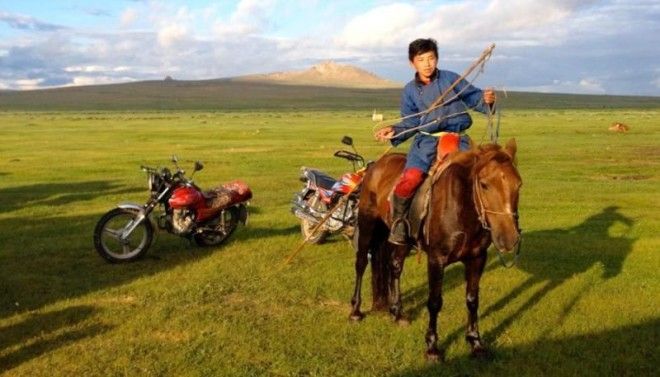
A young man prepares his lasso before spurring his horse into a nearby herd.
As a testament to that, take Mongolia’s capital city. In the last 35 years, the population of Ulaanbaatar has more than doubled. In 1979, less than 400,000 people lived there; today, it’s more than a million.
Ironically, many of these new urbanites still live in gers, and one of the challenges for city officials is how to provide services to these massive “ger slums,” as they are sometimes called. As it often does around the world, the hope for a job in the big city sometimes pays off.
But not for everyone. In Ulaanbaatar, an estimated 50 to 60 percent of the city lives in a ger shantytown.
Three million people live in Mongolia. An estimated 25 to 40 percent of them live as nomadic herders. It is central to their culture and identity. And yes, the city lights continue to attract large numbers away from the horses and goats. But even the kids who go to school in the city return regularly to the fields, where they learn the ways of the generations who came before them. Their families – thousands upon thousands of them – still go to sleep each night in their gers, their herds amassed outside, with nothing else around them but the wind.
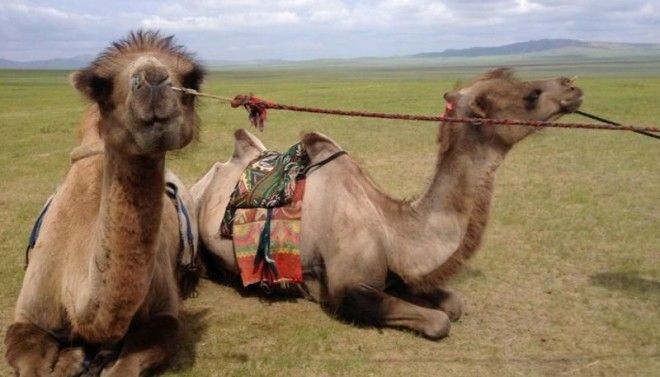
In addition to mastery of horse riding, Mongolian nomads also know how to handle a camel.
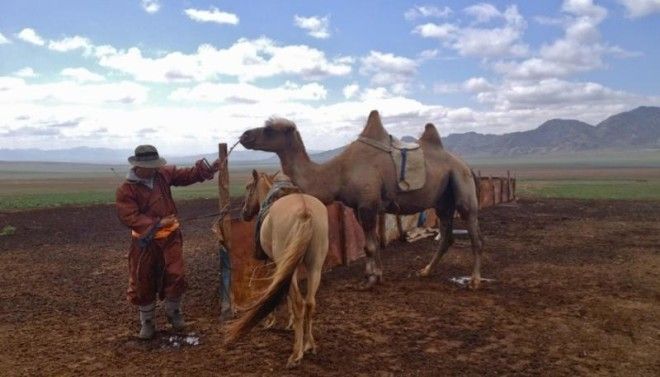
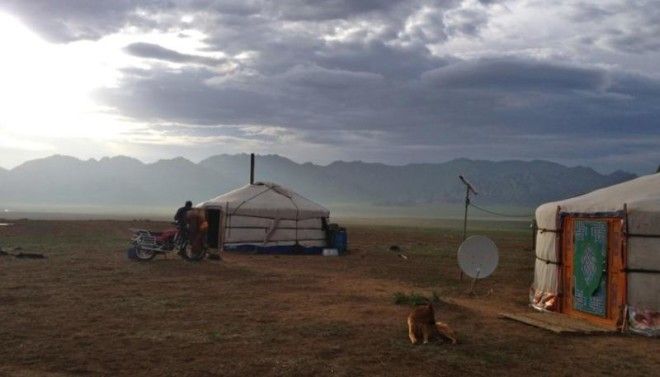
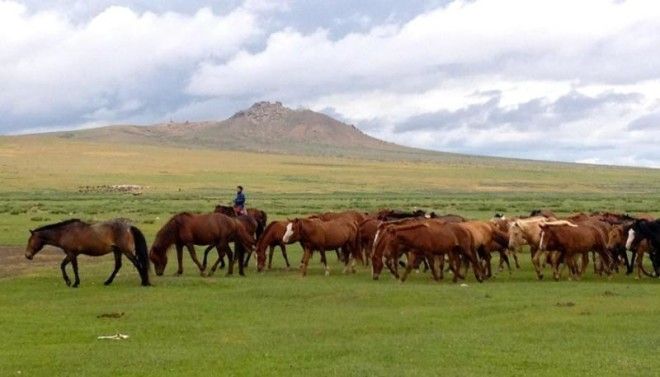
The horse to human ratio in Mongolia is 13:1.
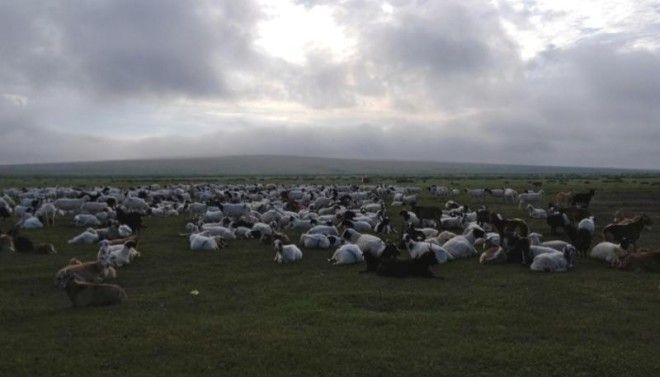
Nomadic families often manage herds of goats, sheep, cattle, and/or horses numbering in the hundreds.
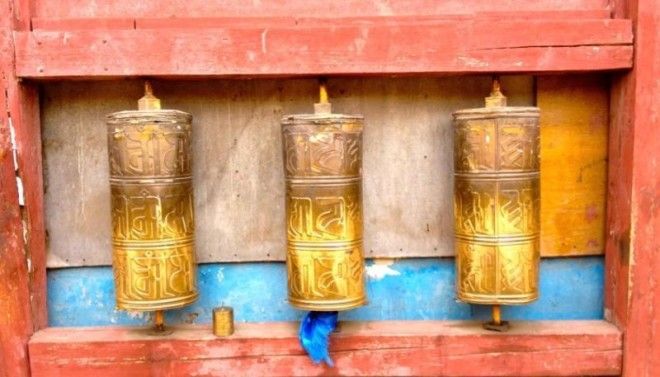
More than half of Mongolians are Buddhists, and one common act of worship is to spin prayer wheels like these in Ulaanbaatar to earn merit.
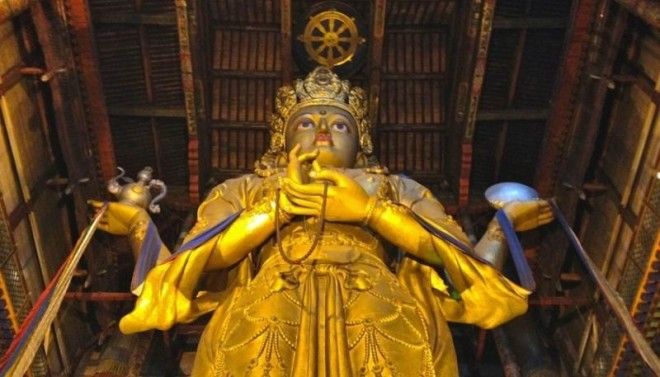
The centerpiece of the Gandantegchinlen Monastery in Mongolia’s capital city of Ulaanbaatar is this 80-foot tall statue of the Buddha.
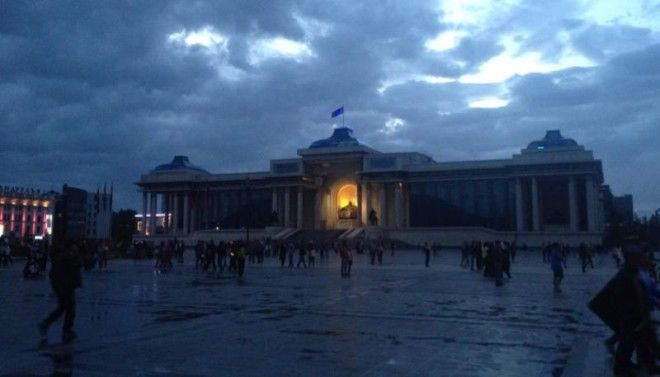
The glowing, backlit statue of history’s most famous Mongolians, Genghis Khan, watches over Sükhbaatar Square in Ulaanbaatar.
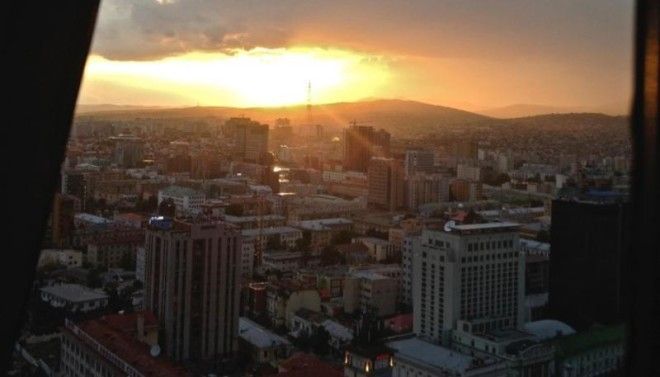
The capital city has rapidly urbanized over the past half century.
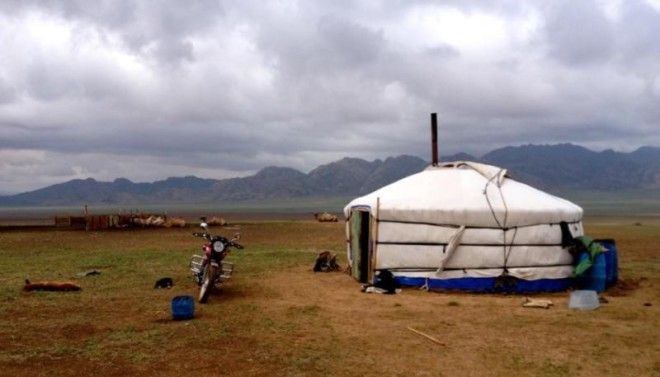
Still, hundreds of thousands of Mongolians continue to live in gers on the open steppes.
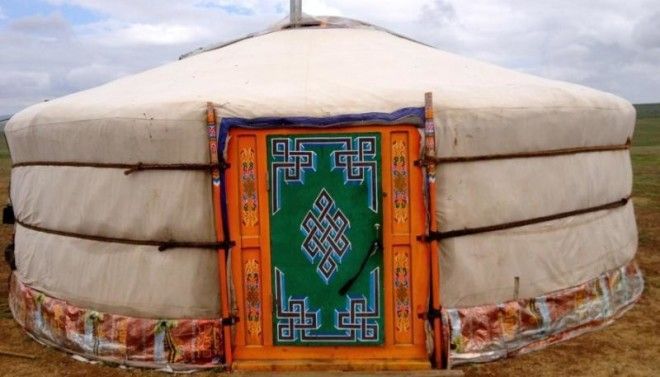
The simple ger structures also include splashes of bright decoration, such as this door.
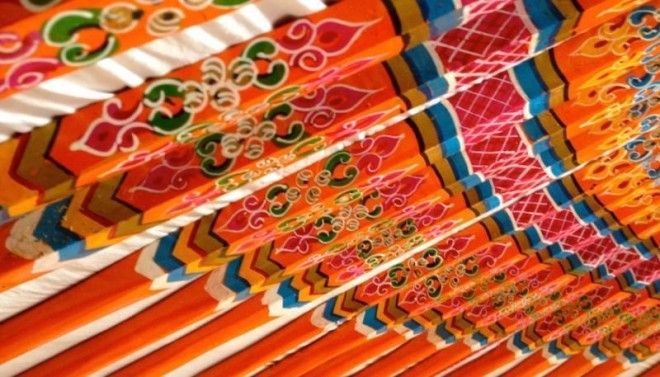
The roof slats are often intricate and brightly colored.
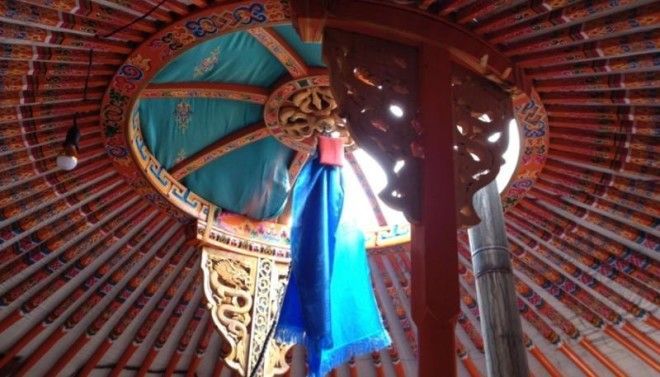
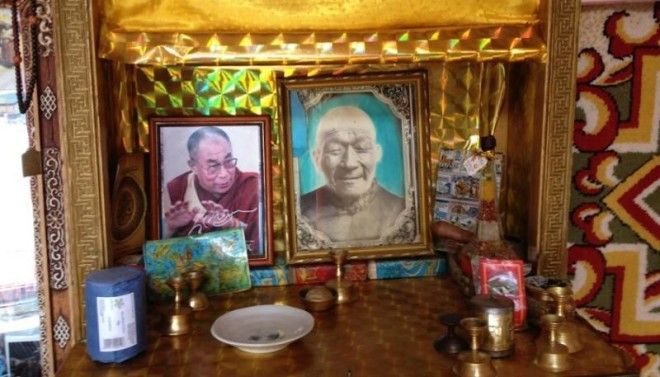
Traditionally, gers include a shrine in one corner that includes images of ancestors or spiritual leaders, such as the Dalai Lama.
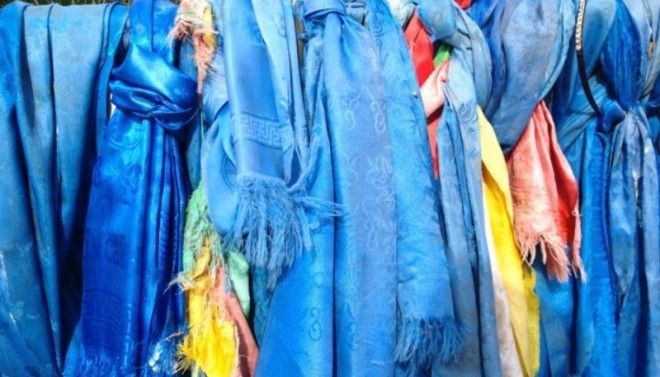
Nomads also tie prayer flags outdoors at the bases of certain holy mountains.
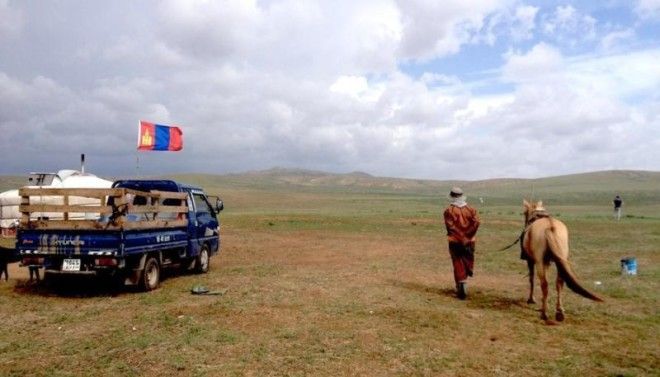
Though threatened by urbanization and other modern forces, nomadic life persists in Mongolia.
